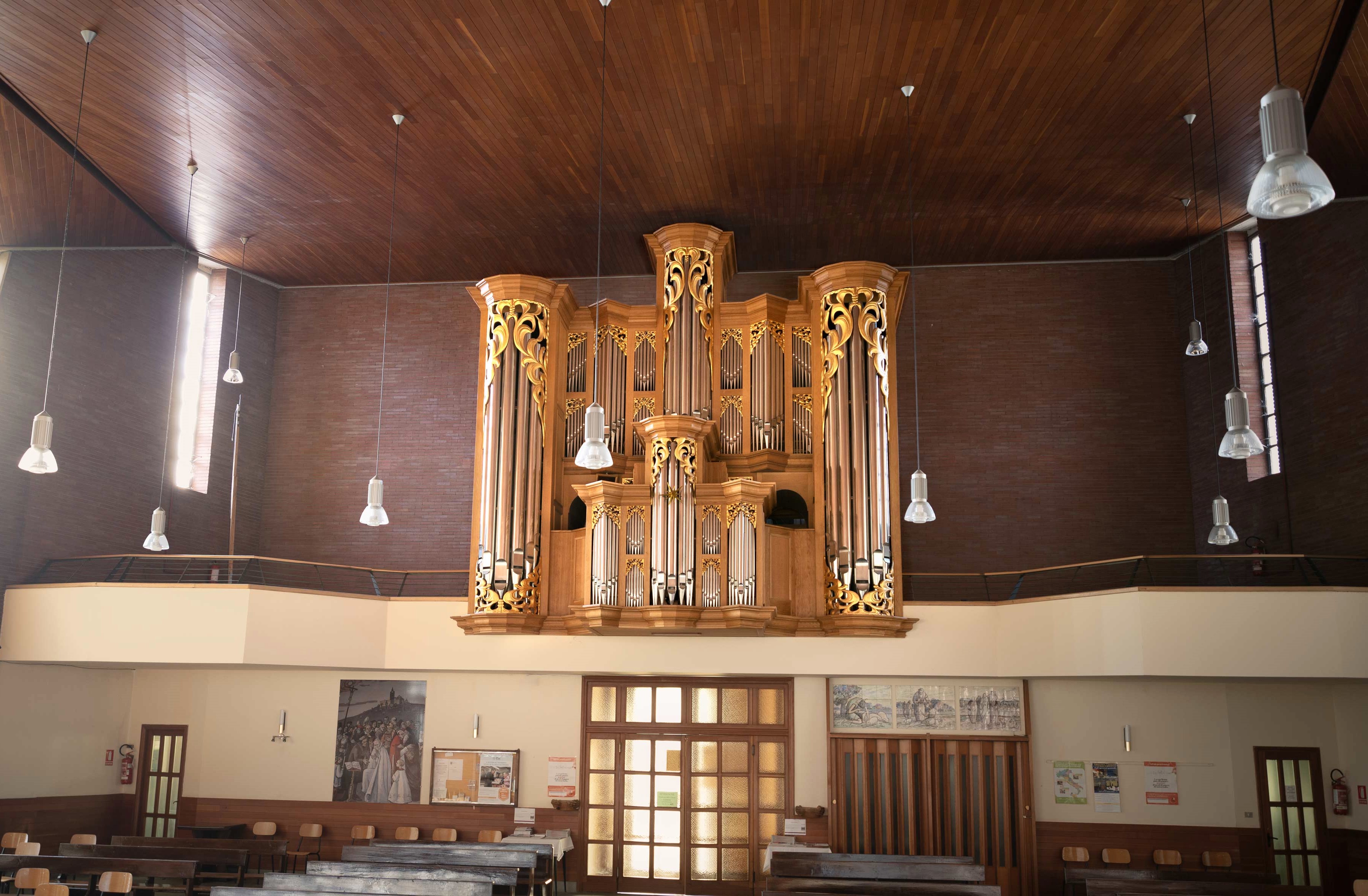Pinerolo, Parrocchia Madonna di Fatima
| Builder | Dell’Orto & Lanzini |
|---|---|
| Year | 2011 |
| Period/Style | Baroque |
| Stops | 33 |
| Keyboards | 3+P |
| Keyaction | tracker/mechanical |
| Tuning | 1/5 Comma Meantone at 440 Hz |
| Sampleset |
Available
 , sampled by
Piotr Grabowski
, sampled by
Piotr Grabowski
|
The organ in Our Lady of Fatima parish church was designed by Carlo Dell’Orto, Massimo Lanzini, and Silvio Sorrentino and built between 2006 and 2011 in the Dell’Orto & Lanzini organ workshop (Arona, Italy) under the direction of Silvio Sorrentino. It is a North German Baroque-style instrument, mainly inspired by the work of Arp Schnitger (1648-1719), the most important and influential organ-builder of the Baroque period in northern Europe. Schnitger integrated the rich tradition of Renaissance and early Baroque organ building, including the structure of spatially separated and tonally independent divisions, into a style characterized by brilliant mixtures and grounding reeds, with excellent fusion capability among different stops, which has been highly influential in 20th-century organ building.
Not strictly a copy of one of Schnitger’s surviving instruments, the Pinerolo organ also features some details that are not conformal with the North German Baroque tradition, such as the pitch (440 Hz) and the presence of a pedal coupler (Ventilkoppel). The scales of the choruses and flutes are inspired by the work of Schnitger and other North German masters. The scales of the reeds and shallots are based on the Schnitger organ in St. Jacobi, Hamburg. The organ uses modified fifth comma meantone temperament Schlick-Vogel, after the restored Schnitger organ in Norden, Germany.
The instrument is housed in a wooden oak case with gilded carvings, designed according to the typical North German Werk concept, with proportions based on the golden ratio: Hauptwerk, Rückpositiv, Pedal towers on either side, and a Brustpositiv over the keyboards. The organ features three keyboards (compass C to f3, 54 notes), a pedalboard (compass C to f1, 30 notes), suspended tracker action, slider chests, mechanical stop action, and 34 speaking stops.
Not strictly a copy of one of Schnitger’s surviving instruments, the Pinerolo organ also features some details that are not conformal with the North German Baroque tradition, such as the pitch (440 Hz) and the presence of a pedal coupler (Ventilkoppel). The scales of the choruses and flutes are inspired by the work of Schnitger and other North German masters. The scales of the reeds and shallots are based on the Schnitger organ in St. Jacobi, Hamburg. The organ uses modified fifth comma meantone temperament Schlick-Vogel, after the restored Schnitger organ in Norden, Germany.
The instrument is housed in a wooden oak case with gilded carvings, designed according to the typical North German Werk concept, with proportions based on the golden ratio: Hauptwerk, Rückpositiv, Pedal towers on either side, and a Brustpositiv over the keyboards. The organ features three keyboards (compass C to f3, 54 notes), a pedalboard (compass C to f1, 30 notes), suspended tracker action, slider chests, mechanical stop action, and 34 speaking stops.
| Rückpositiv | Hauptwerk | Brustwerk | Pedal |
|---|---|---|---|
| Holfloit 8' | Quintadena 16' | Gedackt bass/discant 8' | Principal 16' |
| Quintadena 8' | Principal 8' | Holzprincipal discant 8' | Octava 8' |
| Principal 4' | Spitzfloit 8' | Blockfloit 4' | Octava 4' |
| Rohrfloit 4' | Octava 4' | Octava 2' | Nachthorn 2' |
| Gemshorn 2' | Floit 4' | Quinta 1 1/3' | Mixtur IV |
| Scharf III | Nasat 2 2/3' | Regal 8' | Posaun 16' |
| Sesquialtera I-II | Octava 2' | Trompet 8' | |
| Dulcian 16' | Mixtur IV-V | Cornet 4' | |
| Trompet 8' | Trompet 16' | ||
| Vox humana 8' |
https://piotrgrabowski.pl/pinerolo/
 Pipe Organ Map
Pipe Organ Map





